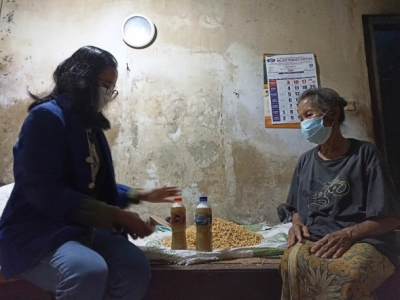PROCESSING TEMPE WASTE INTO ORGANIC FERTILIZER

Making tempe produces waste that emits an unpleasant odor and contaminates waterways. This waste can be in washing water, cooking water, and soaking water for soybeans and tempeh dregs. However, in wastewater-boiled soybeans, there are nutrients Phosphorus (P), Nitrogen (N), and Potassium (K) which are needed for plant growth rate. Nastiti Estiningtyas, a student of the UNY Science Education study program, tries to process tempe waste to be useful and safe for the surrounding environment.
According to Nastiti, boiled soybeans contain 0.11% carbohydrates, 0.42% protein, 0.13% fat, 4.55% iron, 1.74% phosphorus and 98.8% water. "Dried tempeh dregs can be used as a mixture for pet poultry such as chicken," she said.
In addition, soybean cooking water can be made into local microorganisms (MOL) containing the macro, micro, and microorganism. MOL has the potential as a decomposer of organic matter, growth stimulant, and agent for controlling pests and plant diseases. It is good for decomposers, biological fertilizers, and organic pesticides.
This activity was carried out in Sendangrejo Minggir Village, Sleman Yogyakarta as one of UNY's KKN programs. Nastiti hopes that with the knowledge about tempe waste processing, the community can minimize environmental pollution and make good use of the waste. (Dedy, Tj.Lak)

